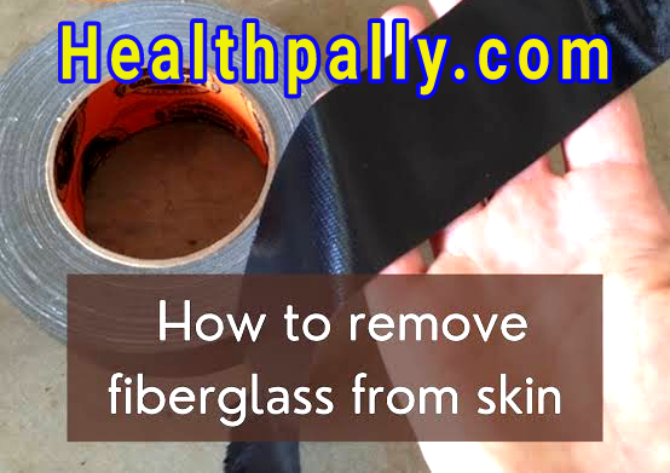How to Remove Fibreglass from Skin - HealthPally
DESCRIPTION
Fibreglass is made of fine glass fibres that easily lodge into the skin, causing itching, redness, and irritation. They usually remain on the surface of the skin and can lead to inflammation if not removed in time. If you have it on your skin, you should avoid rubbing or scratching your skin, as that only drives the fibres deeper beneath your skin.
How can you remove fibreglass from your skin?
Wash your skin with Soap and Water The first step is to rinse the affected area under lukewarm water with mild soap. You can immerse the body in the water. This helps lift fibres sitting loosely on the surface, said Akin Chaktty. Kindly note that hot water is not recommended initially because it opens the pores, allowing fibres to go deeper into your skin.
From personal experience, a gentle liquid soap works better than scrubbing with bar soap. Using the Adhesive Tape Method Medically, doctors often recommend using adhesive tape for fibreglass removal. By pressing duct tape, medical tape, or even masking tape against the skin and peeling it away in one direction, many fibres can be lifted out. However, repeated pressing is discouraged because it can irritate your skin.
Using Tweezers for Visible Fibres When fibres are large and visible, fine-tipped tweezers are the best tool, according to Healthpally. They should be sterilised with rubbing alcohol before use. With patience and precision, fibres can be pulled out one by one.
Rushing or digging into the skin often breaks fibres, making irritation worse. Warm Water Soaks If fibres are too small or lodged deeper, soaking the area in warm water can soften the skin, making removal easier. This is not a fast fix but it works over time, especially for splinters resistant to tape and tweezers.
Lint Rollers as a Tool Although not a typical medical method, sticky lint rollers are surprisingly useful. Occupational safety resources mention them, and I found that rolling one over my forearms after handling insulation pulled up a large amount of fibreglass dust. This is effective for widespread exposure.
What Not to Do?
Scrubbing with rough cloth or abrasive cleaners often makes the irritation worse, so don't do it. I once tried this and experienced more redness and itching. Evidence supports that gentle washing, tape, and tweezers are safer and more effective than abrasive methods.
Skin Care After Removal Once the fibres are removed, proper skin care is essential. Rinsing again with lukewarm water, drying gently, and applying a soothing lotion like aloe vera reduces irritation. Moisturisers help skin recover, while mild hydrocortisone cream can calm persistent redness or itching.
Preventing Future Exposure The best approach is prevention. Gloves, long sleeves, and protective clothing reduce skin exposure to fibreglass. Disposable coveralls make cleanup easier after working with insulation. From personal experience, wearing the right gear greatly cuts down on fibreglass problems.
Conclusion
Fibreglass removal should follow a sequence: wash with lukewarm water and soap, apply adhesive tape to lift out fibres, and use tweezers for visible splinters. Warm soaks and lint rollers can help in tougher cases. Avoid scratching, scrubbing, or using hot water early on. After removal, moisturise and soothe the skin.
Both scientific evidence and lived experience confirm that a careful, step-by-step method is the safest and most effective strategy.

Crop Your Image

To create your personalized DP
1. Tap the avatar to upload your photo (Square photos are recommended to avoid clipping)
2. Enter your name in the text field
3. Once image is uploaded and you are satisfied with the preview, click "Generate my DP"
Note : Download of Generated Dp is free for the first 30 people afterwards you'll be expected to pay a sum of ₦300 to download your personalized dp.
Trending
Upload Guide
Note : Click on the black cross sign to add photo







Comments
0 Comments
No Comment has been made yet.